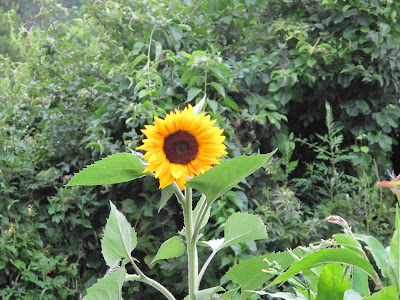The cycle of life at
Restoration Farm stretches throughout the year and is shifting and evolving
each day. Humans work the land,
chickens forage and fertilize the fields and seeds interact with sun, soil and
water resulting in food. There is a
short slumber, and the process begins again.
Tiny black seeds planted
in the short, cold days of February have delivered on their incredible promise. Bunches of fat purple beets crowned with
brilliant leafy greens await us at the distribution tent. I planted those beet seeds last winter in
the greenhouse. A simple action sparked
a natural process and has generated nourishment for the community of members.
The first beets of the summer
are a true gift from the farm – rich, earthy and deeply satisfying. Typically, I love to roast fresh beets, but
this first bunch – with which I feel an intimate connection – is best
experienced in its natural state. I
grate the beets raw into this robust magenta-colored Beet, Carrot and Quinoa Salad (recipe found here).
The salad offers a landscape of colors, textures, and crunch – bright orange
and burgundy with scoops of diced apples, raisins, almonds and pumpkin seeds.
In the sun-drenched fields
of Restoration Farm, the annual ritual of the Summer Solstice Pot Luck occurs again. Folklore says the Solstice initiates a season of fertility, and plants are believed to acquire healing powers on the longest day of the year.
Part of the fun of this event is sampling the variety of dishes made by members with ingredients grown at the farm, so I bring the Beet, Carrot and Quinoa Salad as my contribution to the communal banquet. You feel a real sense of vitality when so many members gather in the field for a meal and a real connection to the food grown here.
Part of the fun of this event is sampling the variety of dishes made by members with ingredients grown at the farm, so I bring the Beet, Carrot and Quinoa Salad as my contribution to the communal banquet. You feel a real sense of vitality when so many members gather in the field for a meal and a real connection to the food grown here.
The sharing of this summer meal - with its bright, vibrant vegetables and crisp greens - will only
happen once before the season gradually begins to fade into another. But, for a brief moment we all revel in the
smiles, flavors and magic of a Midsummer Night at Restoration Farm.

















































